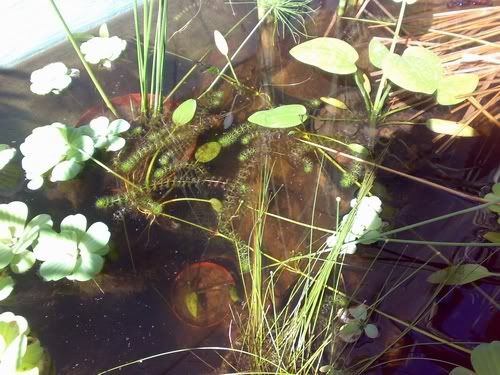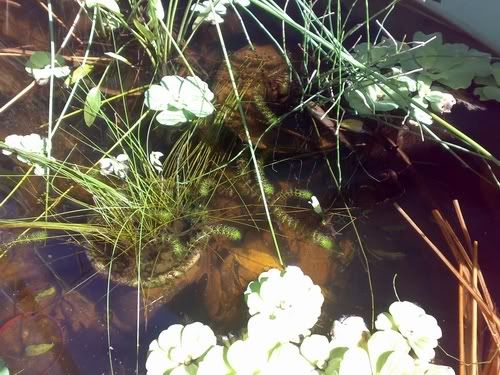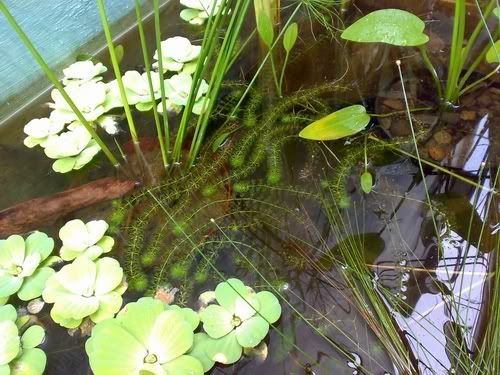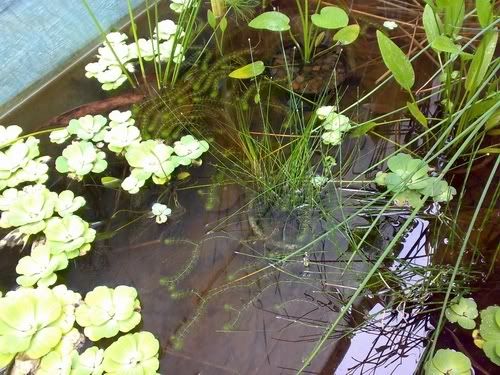
 |
|
|||||||
| Aldrovanda vesiculosa Everything about the Water Wheel Plant |
 |
|
|
Thread Tools | Search this Thread | Display Modes |
|
|
|
#1
|
|||
|
|||
|
Hi just want to share some pic of my pond
introducing the plant in the pond was on may 2008:  on june 2008 :   on july 2008:   and the last pic on august 2008:  
|
|
#2
|
||||
|
||||
|
Well done! Good to see these plants finally growing so well in Indonesia and Malaysia! - Rich
|
|
#3
|
|||
|
|||
|
Rich, Looks like you're leaving quite a legacy in Indonesia and Malaysia.
Kim, Your pond is doing so much better than mine. Indoors or covered? Well mind has been too exposed to the elements. They're not doing too well. So, instead I have shifted them into my apartment's balcony. From three 1half strands, now my betta pot is swamped. I noticed growth is irregular as there isn't enuf sunshine and when they grow under lotus leaf. Got a bit of algae problem. You're okay with algae?
__________________
BA |
|
#4
|
|||
|
|||
|
Nice, very nice. I would think there are wild colonies in Indonesia. It is found in Japan and Northern Australia, yet I cannot find locations for the waterwheel in between the two above locations.
__________________
Without choas there is no order |
|
#5
|
||||
|
||||
|
Quote:
 @ Khoas, I've always wondered about that too, that Aldrovanda is found north and south of Malaysia and Indonesia, including Africa, Japan, and many European countries, but hasn't been found (at least recently) in your countries. It should do well in rice paddies, where the shallow dystrophic water and the roots of the rice should provide fine companion plants. Any shallow pond, or swampy grassy meadows should provide suitable habitats. Those tall monocot companion plants provide the required amounts of CO2 on a constant basis. Kims last pic shows a good presence of these companion plants, whose roots spread out, and get under the Aldrovanda; they also absorb the excess nitrogenous mater that Aldrovanda releases from their captured prey. Without this reciprocal, symbiotic (mutualism) relationship, algae becomes a problem. A healthy population of copedpods, small snails, and other zooplankton also feed on the algae that may attack the Aldrovanda, and get caught in their traps, keep them growing and dividing, in fact, during a mosquito outbreak, they feed so heavily on the mosquito larvea that they branch constantly, almost every few axils. It's a pretty complicated relationship for such a simple looking rootless plant. They also seem to do better in shallow water, only a few inches (about 10 cm) deep so that they are closer to those roots of their companion plants. Otherwise the CO2 become too diluted. They can even survive being dried out without any standing water at all for several days, even weeks. Again, good to see these plants finally making a presence in this part of the world!  - Rich - Rich
|
|
#6
|
|||
|
|||
|
Maybe that is my problem. Took out lots of companion plants to provide space for the Aldro.
Rich, you might think I am sick. I have betta in the pond too (Think they're contributing to algae growth, these B. spendens are breeding and I never see any fries. Think they are consumed by the Aldrovanda. Yup, checked yesterday, there are multiple branching. Sick ah?
__________________
BA |
|
#7
|
||||
|
||||
|
Kim,
Your pond looks so healthy. Can't seem to find any algae growth. Very ehalthy indeed. Anybody has experience growing them indoors under growlights? Tried once with some plants from Ban Aik but I killed them. I sure would like to try again.
__________________
Plant Database - Picture Gallery - Little Shop Of Horrors Treat the earth well. It was not given to you by your parents. It was loaned to you by your children. - A Kenyan Proverb |
 |
| Currently Active Users Viewing This Thread: 1 (0 members and 1 guests) | |
| Thread Tools | Search this Thread |
| Display Modes | |
|
|